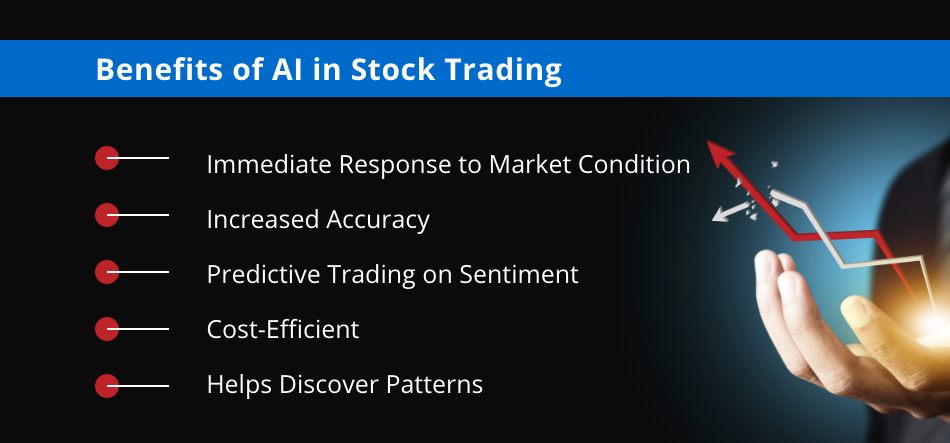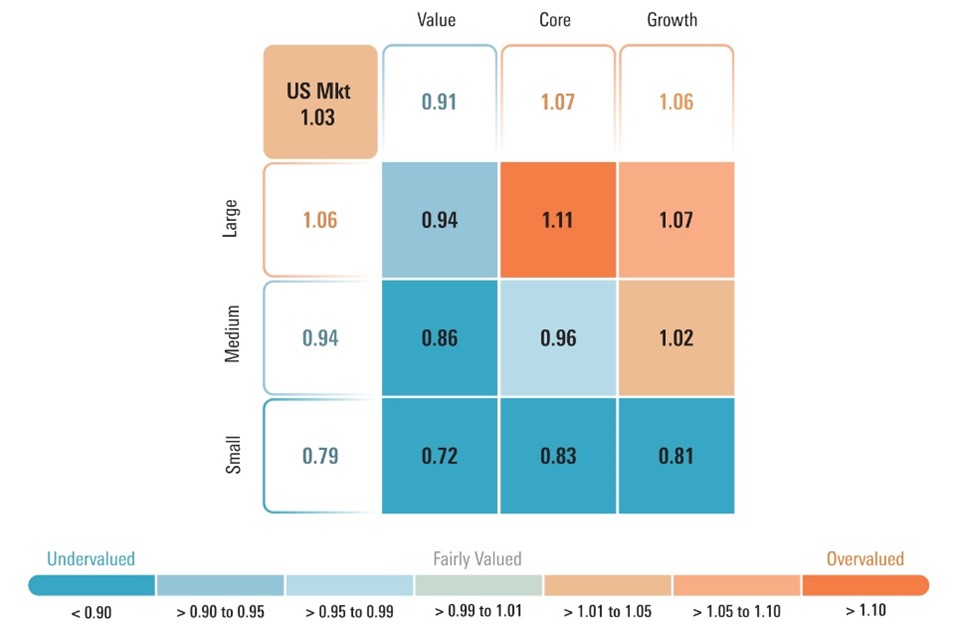20 Excellent Reasons On Deciding On AI Stock Predictions Analysis Sites
20 Excellent Reasons On Deciding On AI Stock Predictions Analysis Sites
Blog Article
Top 10 Tips To Customize Ai Trading Platforms For Your Strategy
The ability to customize the trading platform according to your goals in trading as well as your tolerance for risk and the current market conditions is one of the key features of AI-powered stock prediction and analysis trading platforms. Platforms that have powerful customization capabilities can improve your trading efficiency. Here are the top 10 tips to evaluate the strategy customization capabilities of these platforms:
1. Evaluate Pre-Built Strategy Templates
The variety of templates available: Find out whether the platform has various pre-designed strategies for different trading styles (e.g., day trading, swing trading, long-term investing).
The ease of use is an excellent indicator.
Performance history: Verify if the platform provides historical performance data for previously-built strategies.
2. Assessment Customized Strategy
Drag-and-drop platforms: Select platforms that have drag-and-drop interfaces that allow you to easily create custom strategies.
Coding Options: If you are a skilled user, ensure that your platform supports custom coding.
Flexibility: Ensure that the platform allows you to define entry and exit rules as well as risk management parameters and other key components of your strategy.
3. Check for Backtesting Capabilities
Historical data. Check if your platform can supply enough historical data in order to backtest your strategy.
Modifiable parameter: Make sure that you are able to alter parameters while backtesting (e.g. indicators, timeframes).
Performance metrics: Check if the platform offers specific performance metrics that can be used to backtest strategies (e.g. win rate, sharpe ratio drawdown, etc.).
4. Evaluate Real-Time Strategy Testing
Paper trading: Ensure the platform provides paper trading or simulation modes to evaluate strategies in real-time without risking capital.
Live testing You can test your strategies on live markets by using tiny amounts of capital to assess their effectiveness.
Real-time Adjustments: Check whether you can adjust in real-time, based upon the market conditions.
5. Assess Integration with Technological Indicators
Library of indicators: Find out whether the platform provides a comprehensive library of indicators that are technical (e.g., moving averages, RSI, MACD).
Custom indicators you should be able to design or import your own indicators that you can use for your strategies.
Check the combination of indicators.
6. Check for Risk Management Tools
Stop-loss/take-profit: Ensure the platform allows you to set stop-loss and take-profit levels within your strategies.
Position sizing. Check whether you have established rules for the best way to handle the risk (e.g. set amount per portfolio, percentage).
Risk-reward-ratio: Check the support of the platform to set risk/reward ratios for individual trades or trading strategies.
7. Evaluate Multi-Asset Strategy Support
Asset classes: Check that your platform is able to support various asset classes like ETFs, stocks and options.
Cross-assets strategies: Find out whether you're able to create strategies that incorporate various asset classes.
Market coverage: Check if the platform covers those markets that you're interested in (e.g., US, international, cryptocurrencies).
8. Review Automation, Execution and Execution
Automated trading. Check if the platform allows automated execution, based on previously defined strategies.
Order types - Make sure the platform supports a range of order types to execute strategies (e.g. stop, limit or market).
Latency: Verify that the platform has a minimal latency for trading, especially if are using high-frequency strategies.
9. Review the Strategy Optimization Tools
Parameter optimization - Make sure that the platform includes tools to optimize your strategy's parameters.
Machine learning Integration: Determine whether a platform incorporates machine-learning to refine and optimize strategy.
Scenario Analysis: Find out whether the platform allows testing strategies across different markets (e.g. bull or bear, volatile).
10. Review Community Feedback and User Feedback
User reviews: Examine user feedback to gauge the effectiveness of the platform for strategy customization.
Forums for community members: See if you can find forums where users can discuss and share their custom strategies.
Support resources: Make sure the platform offers tutorials, webinars, or documents to help users create and enhance their strategies.
Bonus Tips
Trial period for free: You are able to try out the customizable options of the platform using a the demo or trial.
Scalability: The platform must be able to handle more complex trading strategies as they evolve.
Support for customers: Find out if there is assistance available to address queries or issues related to the strategy.
By following these tips you can assess the capability of AI platforms for analyzing and predicting stocks to modify strategy. This will allow you to choose a platform that matches your objectives in trading and allows you a way to apply and improve strategies. A platform with strong customization options can empower users to be able to change market conditions and improve your trading performance. Read the recommended here are the findings on chatgpt copyright for more advice including best ai trading app, ai trading tools, best ai stock, best ai stock, ai trade, trading with ai, ai stocks, options ai, trading with ai, ai for stock trading and more.
Top 10 Tips For Assessing The Risk Management Of Ai Stock Analyzing And Predicting Trading Platforms
Any AI platform for analyzing or predicting stocks must include risk management, which is essential to safeguard your capital and limiting losses. Platforms that are equipped with powerful risk-management tools can assist you in navigating volatile markets and make educated choices. Here are the top ten tips for assessing risk management capability of these platforms.
1. Analysis of Stop-Loss and Take-Profit Features
Customizable settings: Make sure you set your maximum take-profit and stop-loss levels for specific trades.
Examine the platform to determine whether it has a trailing stop feature, which will adjust automatically in the event that the market changes in your direction.
Find out if your platform permits you to make stop-loss orders that ensure the close of your trade at the price you have specified, even in unstable markets.
2. Tools to Measure Positions
Fixed amount. Be sure to have the option to define your positions' sizes in terms of the fixed dollar amount.
Percentage in portfolio The best way to manage your risk by establishing position sizes proportionally as a percentage.
Risk-reward: Find out if your platform allows you to define risk-rewards for each trade or strategy.
3. Check for Diversification Support
Multi-assets trading: Verify that the platform is able to support trading across a variety of asset classes (e.g. ETFs, stocks, options, forex, etc.) for diversification of your your portfolio.
Sector allocation: Make sure the platform has tools for monitoring the sector's exposure.
Geographic diversification - Check that the platform supports the ability to trade on markets across the world. This will allow you to diversify geographical risk.
4. Review leverage control and margins.
Margin requirements: Make sure the platform is clear about limitations on margins when trading leveraged.
Find out the limitations on leverage. This option to manage the risk you take.
Margin Calls: Ensure that the platform sends out prompt notifications of margin calls in order to avoid liquidation of your account.
5. Review the risk Analytics and Reporting
Risk metrics. Make sure your platform has key risk indicators (e.g. VaR Sharpe Ratio) pertinent to the portfolio you are managing.
Evaluation of scenarios: Ensure that the platform you are using lets you simulate market scenarios and evaluate risk.
Performance reports - Verify that the platform provides detailed performance reporting, including risk adjusted returns.
6. Check for Real-Time Risk Monitoring
Monitoring your portfolio. Make sure that your platform can monitor the risk in real-time of your portfolio.
Alerts and notifications. Ensure that the platform has sent out alerts in real-time when risks occur (e.g. margin breaches, triggers for stop-loss orders).
Take a look at the dashboards for risk. If you're looking to get a full picture of your risks, be sure that they are customizable.
7. Test Stress Testing and backtesting
Test your strategies for stress: Ensure that that the platform you choose permits the testing of your portfolio and strategies under extreme market conditions.
Backtesting. Verify that the platform permits backtesting, which involves the use of historical data to determine risk and performance.
Monte Carlo simulations: Verify whether the platform utilizes Monte Carlo simulations to model a range of possible outcomes and assess risks.
8. Risk Management Regulations - Assess the compliance
Compliance with Regulations: Check the platform's compliance with relevant Regulations on Risk Management (e.g. MiFID II for Europe, Reg T for the U.S.).
Best execution: Make sure that the platform follows best execution practices. This will ensure that trades are executed according to the highest price possible to avoid the chance of slippage.
Transparency Verify the platform's transparency as well as clarity in risk disclosure.
9. Look for parameters controlled by the user.
Custom risk rules: Ensure that the platform allows you to create custom risk management guidelines (e.g. maximum daily loss, maximum size of position).
Automated controls for risk You should check whether your system can enforce risk management rules based on the parameters you've defined.
Manual overrides Check whether you are able to manually override the risk management system in a situation of emergency.
User feedback from reviewers and case studies
User reviews: Examine feedback from customers to evaluate the effectiveness of the platform in assessing risk.
Case studies Look up case studies or testimonials, that prove the platform's capability to manage the risk.
Community forums - Search for yourself if the platform offers a user community that is active and where traders can discuss their risk management strategies.
Bonus Tips
Trial period: Take advantage of the demo or trial version for free to try out the features of the platform for risk management in real-world scenarios.
Customer support: Make sure your platform has a robust assistance for any questions or issues that are related to risk management.
Look for educational sources.
By following these tips you can determine the capabilities of an AI stock prediction/analyzing trading platform to control the risk. This will allow you to select a system that protects your capital and minimizes any losses that could occur. To manage volatile markets and achieve long-term trading successes you require a reliable software for managing risk. Read the best investing with ai url for more examples including ai tools for trading, best ai penny stocks, ai investment tools, best ai stocks to buy now, investing with ai, best ai trading platform, ai stock predictions, ai tools for trading, ai stock investing, ai stock price prediction and more.